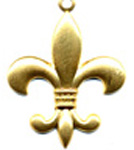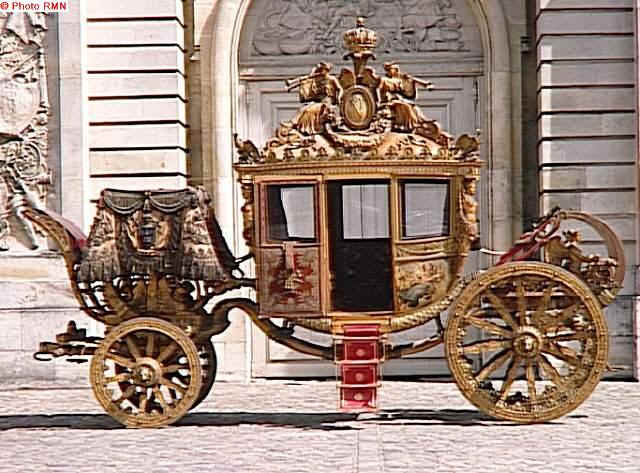
Museums: French power restores its image
The major French museums have great ambitions on the borders of Belgium. The Pompidou center will build a second museum in Metz and the Louvre will do the same in Lens. Each time in former mining regions a stone’s throw from our country and, each time with great Japanese architects. The Pompidou center chose Shigeru Ban who offers a large sail, like a giant tent from the third millennium. The 35 million euro museum should be inaugurated in 2008.(…)
Kazuyo Sejima, 50, and Ryue Nishizawa, 40, are dressed all in black, as usual. They gained their fame through their projects, minimalist in appearance but technologically daring, integrated into nature, transparent and fluid, which erase gravity and abolish the hierarchy of spaces. Their recent Kanazawa museum is already an authority. They also built the Dior boutique in Tokyo and were chosen for the New Museum of Contemporary Art in New York.
At the entrance to the Civa, we discover the plans of the museum, the intentions of the agency and a large model of the future Louvre-Lens. In this northern town, marked by its mining past, a wooded area has been cleared in Lens itself, with, in the middle, an immense meadow lined with trees on all sides. “We had to build a very large building,” explain the architects, “but we chose to do it in harmony with this beautiful nature and with the habits of local walkers. As in our Karazawa museum, which we called “the first museum of the 21st century” , we want to make an open museum and multiply the volumes to avoid overloading the site”. (…). The museum presents itself as a great journey, a walk in the middle of nature, on glass paths, in the middle of a clearing, between nature and its reflections, between the real and the unreal. Mediation between the visitor and the museum will be essential throughout the journey. This 100 million euro museum, 17,000 m2 of usable space, including 7,700 m2 of exhibition space, could be completed around 2009. The Japanese beat, in a competition, Zaha Hadid, Steven Holl and Rudy Riciotti, among others.
Henri Loyrette has many ambitious plans for his museum created in 1793, in the midst of the French Revolution. He has hit the headlines in recent months with his long-term partnership agreement with the Atlanta museum including loans of works dearly paid for by the Americans. We also talk a lot about Louvre 2 which would be built in Abu Dhabi, a pharaonic project, but he dismisses it when we talk to him about it: “It is a political project of the French government which would involve several museums. At this stage, this does not does not concern us . He prefers to talk about the three major projects he is leading in France. First, the “Pyramids” project. The American-Chinese architect, Pei, caused a sensation and debate by creating a large glass pyramid in front of the Louvre to provide access to the museum.
But this project, designed for a museum with 4 million visitors per year, no longer holds when there are 8 million per year like today. Henri Loyrette, who supported Pei from the beginning, asked the architect to think about an extension of the pyramid and a review of the reception at the museum. “(…) The second major project is that of the rooms of Islam (presented briefly at the Civa exhibition). The Visconti courtyard at the Louvre will not be covered in Rudy Riccioti’s award-winning project, but will be topped with a large tent. “It is an essential objective to finally present our rich collections on Islam in order to illuminate the bright side of these civilizations. And for this we made a resolutely contemporary choice . (Source: La lIbre 5/12/2006)

We can, a priori, only welcome the fact that museums are spreading, that “culture” is thus made available to the public. The French government knows it. He has always presented himself as the champion of culture and the center of international influence which passes through it. It is surprising, therefore, that this alleged brilliance coexists with a degenerative process in society and the economy, with moral laxity, the loosening of social bonds, the regression of language and writing, the progression of illiteracy, the weakness of artistic creation and the non-existence of intellectual innovation in this country. In the case of Lens, located in the North of France marked by its lack of ambition and international openness, by the reconstitution of a vast fourth world and the lasting accumulation of social problems, the paradox becomes particularly obvious…
It is because it is convenient to justify everything in this way, to restore the image of the political and economic order, to make people forget its authoritarian and bureaucratic components, to legitimize mass immigration or to conceal the deficiency of conviviality by appealing to an immutable and higher order of thought and beauty. If we are what we are, there is nothing we can do about it. At the top, there are principles that we respected, what was done was what was needed, and we couldn’t change anything. We can also and incidentally contribute to the education of the masses attached to their cultural identity thanks to the “rooms dedicated to Islam”.
Outside too, on an international level, it is important to make people believe in the democratic and enlightened character of the regime. This allows the French government to appear as a reference on the international scene. Without forgetting that “Maison France” uses architectural heritage and highlights history to export prestigious food products, to make millions of tourists believe that it is the destination par excellence to spend their foreign currencies, to convince foreign students that it is a privileged place of learning, investors that they will find a favorable climate for their business there, voters that there is a “happiness of being French”.
It has so far succeeded in propagating this image, even if observers see the importance of the social crisis, even if travelers question the quality of the welcome, the abusive level of prices, the incapacity of the inhabitants to speak English, even if foreigners who chose France on the basis of a widespread illusion are now realizing the extent of their error.
To pursue this policy of self-legitimation, the French State is ready to invest gigantic budgets despite a context of public deficit. To secure the services of the best specialists in design and architecture. Nothing is too beautiful to establish its legitimacy; if it has the reinforcement of culture, can annex the past and adds contemporary art, it is because it undoubtedly embodies a respectable, just and reasonable order, the ultimate foundations of which cannot be doubted.
But hasn’t state prestige based on great architectural achievements always been the expression of imperial ambitions?










